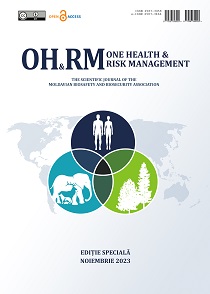Abstract
Introduction. In recent years, the resistance of Klebsiella pneumoniae species, both to reserve antimicrobials and to several groups of antimicrobial preparations (MDR), has emerged as a significant global public health concern. K. pneumoniae exhibits a variety of antimicrobial resistance mechanisms and is a common pathogen responsible for surgical wound infections, gastrointestinal tract infections, urinary tract infections, and community-acquired infections that can trigger nosocomial infection outbreaks. Numerous studies have shown that a majority of infections linked to various medical devices, including urinary and intravascular catheters, were attributed to K. pneumoniae, with approximately 90% of these strains being biofilm producers. According to a report by the CDC, of the 9,000 infections caused by carbapenem-resistant Enterobacteriaceae species documented in 2013, around 80% were attributed to K. pneumoniae. Currently, the global antimicrobial resistance rate for K. pneumoniae is estimated to be approximately 70%, with a mortality rate ranging between 40% and 70%. Aim. Determination of resistance profiles and detection of resistance mechanisms in K. pneumoniae strains isolated from clinical biosubstrates. Material and methods. For the determination of K. pneumoniae strains producing extended-spectrum beta-lactamases and/or carbapenemases, phenotypic tests (double disk synergy test, combined disk test (MastDisk Combi), Amp-C test with cloxacillin, Normand Poirel test, MAST CARBA PacE) and molecular genetic tests were performed. Through the Combo Test, Combi Carba Plus tests and the immunochromatographic method, the KPC, OXA-48, MBL (NDM, VIM, IMP) type enzymes that confer resistance to the bacteria were highlighted. Confirmation of resistance mechanisms was performed by the molecular-genetic method. Results. Between 2020 and 2022, a total of 867 (76.8%) K. pneumoniae strains were isolated and reported from urine and 262 (23.2%) strains - from blood and CSF. The resistance profiles of K. pneumoniae indicate worrying levels of resistance to all groups of antimicrobial preparations, such as: penicillins – 76.5%, fluoroquinolones – 78.4%, 3rd generation cephalosporins – 82.8%, 4th generation cephalosporins – 64, 1%, aminoglycosides – 71.6%, including carbapenems – 40.5% and colistin – 23.5%. ESBL-producing strains are increasing, from 17.5% confirmed strains in 2020 to 33.6% confirmed isolates in 2022. Among the 66.5% strains suspected of producing carbapenemases, 35.7% isolates were identified by the immunochromatographic method, including OXA-48 type presented 34.4% strains of K. pneumoniae, NDM type – 13.9%, IMP type – 4.9% strains, KPC and VIM type – 0.2% strains each. Through the multiplex PCR, 29.4% strains of K. pneumoniae with resistance genes were confirmed. In 28.8% of isolates, the blaOXA-48 gene was determined. Alarmingly, 10.0% strains showed 2 or more resistance mechanisms simultaneously. Conclusions. K. pneumonia is the most common pathogen involved in the etiology of invasive infections. The resistance levels of this species have reached alarming levels, even with reserve antimicrobials. In the investigated K. pneumoniae species, a wide array of resistance enzymes was identified, with the most frequent being OXA-48, followed by NDM.
Note: This paper has been authored as part of the project: 20.80009.8007.09 “Studying the mechanisms of antimicrobial resistance in gram-negative bacilli to enhance the national surveillance system.”
|
 Views: 251|
|
Views: 251|
|
This work is licensed under a Creative Commons Attribution 4.0 International License.

